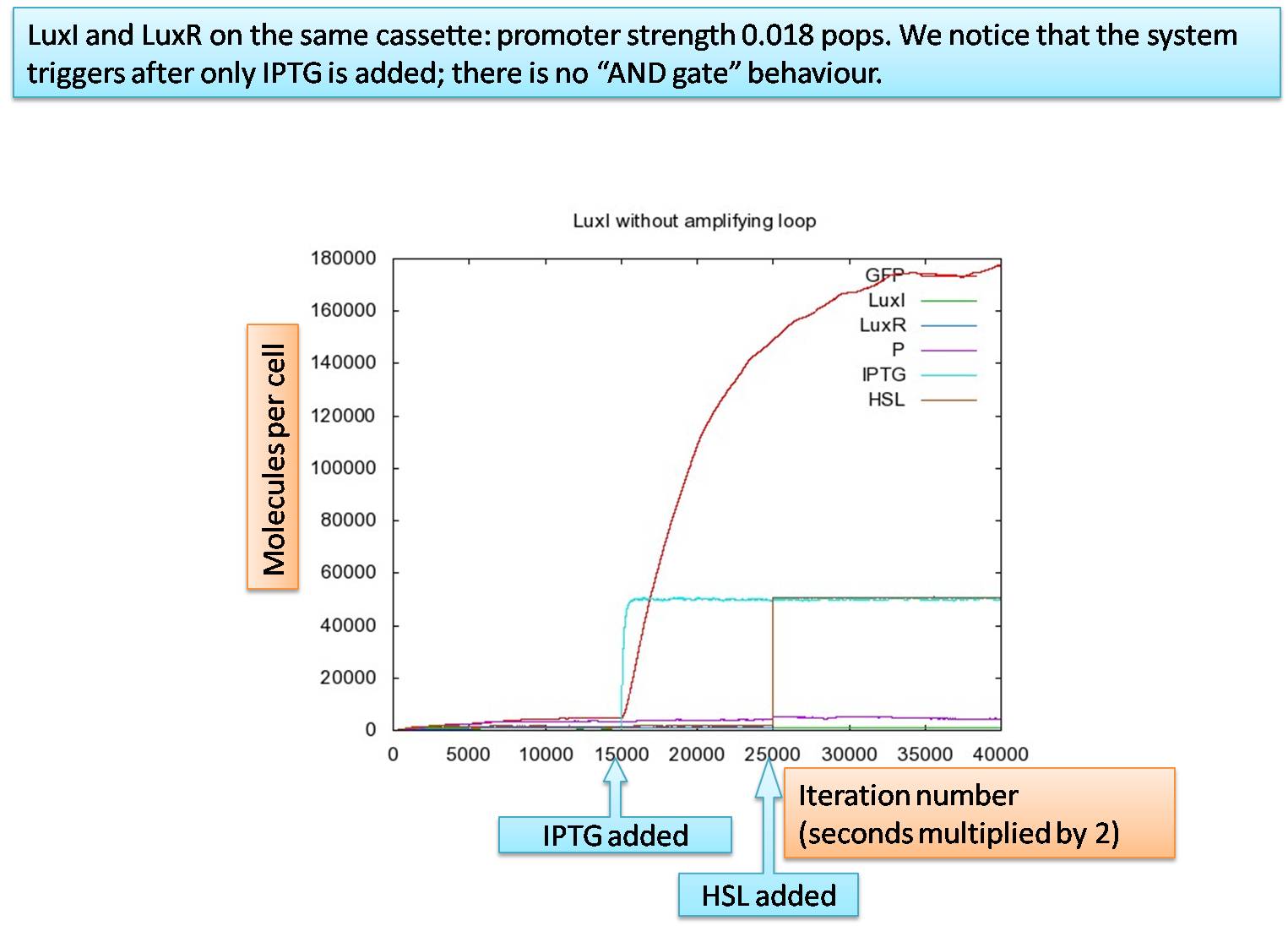Team:Aberdeen Scotland/quorum
From 2009.igem.org
University of Aberdeen - Pico Plumber
Quorum sensing Revisited
One of the triggering mechanisms of our Pico plumber in order to start glue production, is quorum sensing. Quorum sensing is a response of bacteria to their population density. In the natural system of the marine bacterium Vibro fischeri a small molecule, termed autoinducer, is constantly produced at a low level. This autoinducer molecule (HSL) can freely diffuse in and out the E.Coli membrane. The HSL molecule then diffuses into the surroundings. Other bacteria in the surrounding environment can sense each other via diffusion of HSL through their cell membrane. In the absence of a high density of cells HSL rapidly diffuses into the environment and the HSL concentration is too low to trigger quorum sensing. Quorum sensing is based on a lux-type regulated transcriptional system controlling the production of the autoinducer. In Vibro fischeri, LuxR is encoded on the left side of the operon whereas LuxI is produced on the right side. LuxI together wuth an enzyme always present in the cell, called SAM, together generate in an enzymatic reaction the autoinducer, HSL. The autoinducer HSL together with LuxR form a transcriptional activator for the lux operon, also known as lux box. This complex enables a stronger production of LuxI and LuxR and can been seen as an amplifying loop for LuxI production [1-3].
The issue
In the planning stage of the project, we designed the quorum sensing circuit to have a constant medium production of LuxI in order to activate a lux box on the plasmid where the glue production takes place, in the presence of sufficient cell density:
We are using the lux operon and LacO to give us AND–logic gate to start glue production (here denoted as gene X and gene Y). It is expected that if IPTG is present and there is no HSL within the cell, the promoter starts to produce the glue at a low level. In the presence of HSL and IPTG the promoter starts fabrication of the glue at its maximum level. A possible source of error in our design is that our system might trigger glue production and cell lysis on its own. Having in mind that we have a constitutive medium strength promoter, we need a lower concentration of LuxI. To achieve this LuxI was tagged and a Shine-Dalgarno sequence was used to reuce ribosome affinity to 60%.
The Model
We ran our simulation using the IPTG and HSL concentration outside the cell as inputs. We changed both IPTG and HSL concentration at different times by a switch from low to high to see how the inputs affected the simulation. In our later simulations we simulated both the IPTG and HSL inputs more realistically. We did this applying the sochastic simulation (tau-leap method).
The graph shows the concentration of molecules against the iteration number (which is equivalent to time multiplied by a time-step constant of h=0.5). GFP is a place holder for the glue, P stands for the complex of HSL and LuxR, and finally, IPTG and HSL are the input signals for our cell. IPTG is released at 15000 iterations, whereas HSL diffuses from the outside at 25000 iterations. We want a system to have AND-logic gate, so that both high IPTG and HSL concentration is required for system response. However, it is clearly visible that maximal production of GFP already starts shortly after IPTG gets into the cell. We can conclude from this that the lux-box is activated from within the cell. TThe high production of LuxI and hence, HSl, leads to a high concentration of the HSl-LuxR complex. Moreover, the HSL-LuxR complex is ver stable. This complex cannot diffuse out of the cell as HSL can, so that its concentration can build up very much and hence, activate the lux-box.
 "
"


